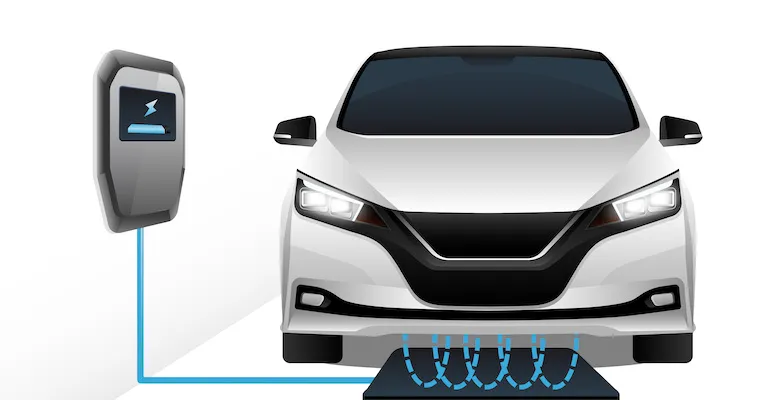In 2023, the electric vehicle (EV) market is witnessing a monumental shift. According to Bloomberg Green, over 20 million EVs are expected to hit the roads by the end of the year. But it’s not just the cars themselves that are making waves; it’s also the advanced infrastructure supporting them. One of the most groundbreaking developments? Wireless EV charging stations. These stations are set to revolutionize urban EV use, offering a seamless and efficient way to power up vehicles without the hassle of plugs and cables. In this article, you’ll discover how wireless charging is transforming cities, the technology behind it, and what the future holds for urban mobility.
The Technology Behind Wireless Charging Stations
What is Wireless Charging for EVs?
Wireless charging, often referred to as inductive charging, utilizes electromagnetic fields to transfer energy between two objects. In the case of EVs, this means a charging pad embedded in the ground and a receiver on the vehicle. According to MIT Technology Review, this technology isn’t just futuristic; it’s becoming increasingly viable with companies like WiTricity and Plugless leading the charge.
How Does Wireless Charging Work?
- Inductive Coupling: The process begins with a magnetic field generated by the charging pad. This field induces a current in the car’s receiver coil, effectively charging the battery without direct contact.
- Efficiency: Recent advancements have pushed the efficiency of wireless charging systems to over 90%, making them comparable to traditional wired options.
- Safety and Convenience: With no physical connectors, the risk of electrical hazards is minimized. Plus, drivers enjoy the convenience of simply parking over a pad to charge.
Current Implementations and Pilot Programs
Cities like Oslo and London are at the forefront, with pilot programs testing the feasibility of wireless charging on a large scale. According to Electrek, Oslo’s program aims to equip taxi stands with this technology, reducing downtime and promoting cleaner urban air.
The Benefits of Wireless Charging in Urban Environments
Enhanced Convenience for EV Users
- No More Cables: Forget untangling cords or worrying about wear and tear. Wireless charging simplifies the process, making it as easy as parking your car.
- Time-Saving: With strategically placed charging pads in parking lots, offices, and even residential areas, users can charge their vehicles during routine stops.
Promoting Sustainable Urban Mobility
- Reduced Emissions: By making EV charging more accessible, cities can encourage more drivers to switch from gasoline-powered cars, significantly cutting emissions.
- Integration with Public Transport: Some cities are exploring wireless charging for buses and trams, enhancing the sustainability of public transport systems.
Economic and Infrastructure Considerations
- Cost Implications: While initial setup costs are higher than traditional chargers, long-term savings on maintenance and increased EV adoption can offset these expenses.
- Scalability: With the ability to install charging pads in existing infrastructure, cities can scale their EV capabilities efficiently.
Practical Guide to Adopting Wireless Charging
How to Charge Your EV Wirelessly
- Check Compatibility: Not all EVs currently support wireless charging. Consult your vehicle’s manufacturer or check for aftermarket kits.
- Locate Charging Stations: Use apps like PlugShare or ChargePoint to find wireless charging-enabled locations.
- Park and Charge: Simply align your vehicle with the pad and start charging. Many systems now offer mobile notifications for real-time updates.
Where to Buy Wireless Charging Solutions
- For Home Use: Brands like Plugless offer home solutions that can be installed in garages or driveways.
- Public Stations: Companies such as WiTricity partner with cities and businesses to expand public access.
What to Compare When Choosing Wireless Charging
- Charging Speed: Consider the rate of charge and how it aligns with your daily driving needs.
- Installation Costs: Factor in both the cost of the hardware and any necessary modifications to your parking area.
- Support and Maintenance: Ensure that there is adequate customer support and maintenance services available.
Conclusion: The Future of Urban Mobility with Wireless EV Charging
As urban centers continue to grow, the demand for innovative and sustainable transportation solutions will only increase. Wireless charging stations are not just a convenience; they are a catalyst for cleaner, more efficient cities. By reducing the barriers to EV adoption, these technologies can help pave the way for a greener future. Are you ready to embrace this change? Consider how wireless charging could fit into your lifestyle and community, and be part of the revolution transforming urban mobility. With advancements in wireless technology and growing infrastructure, the future looks bright—and wire-free—for electric vehicles. What do you think about the impact of wireless charging on urban life? Share your thoughts below!

